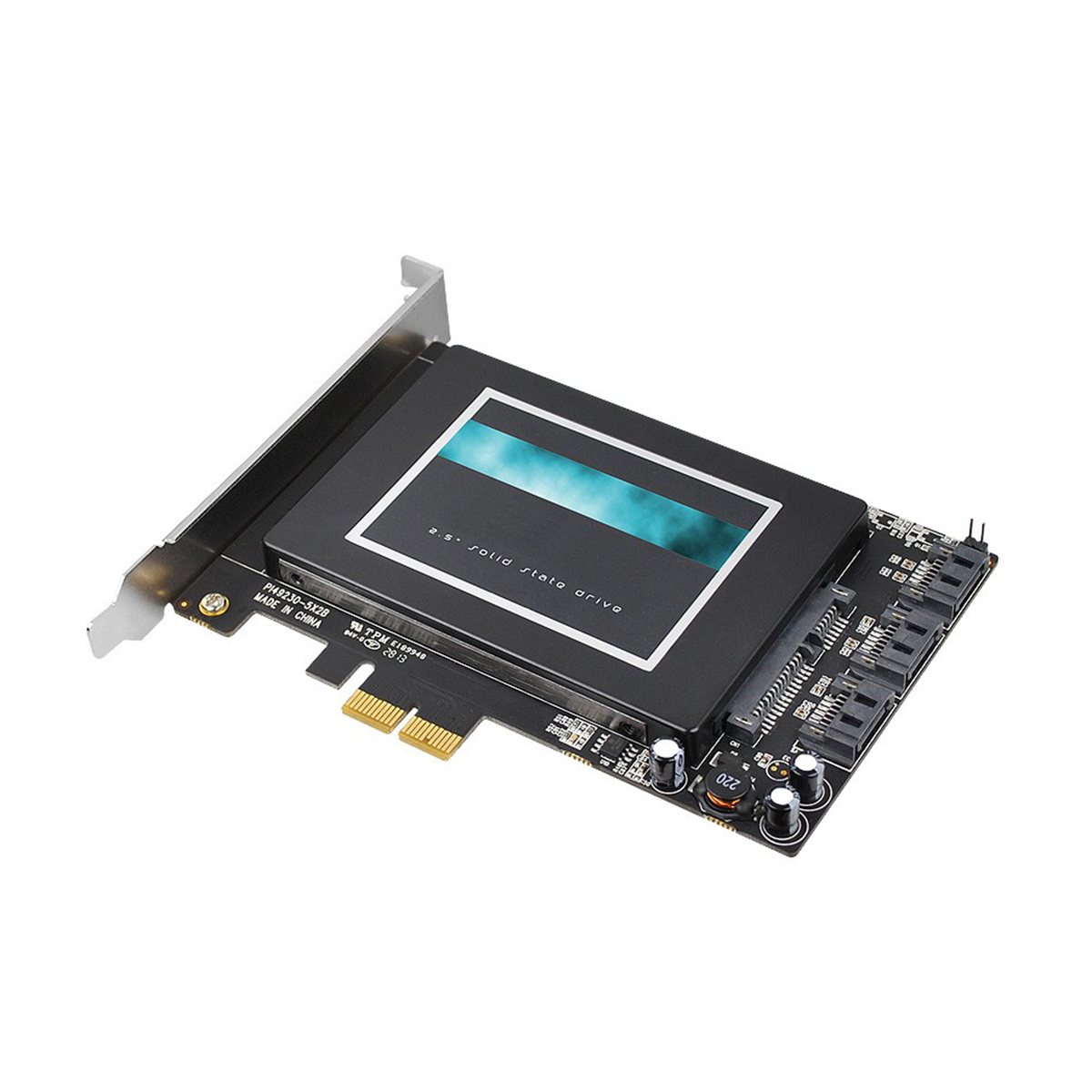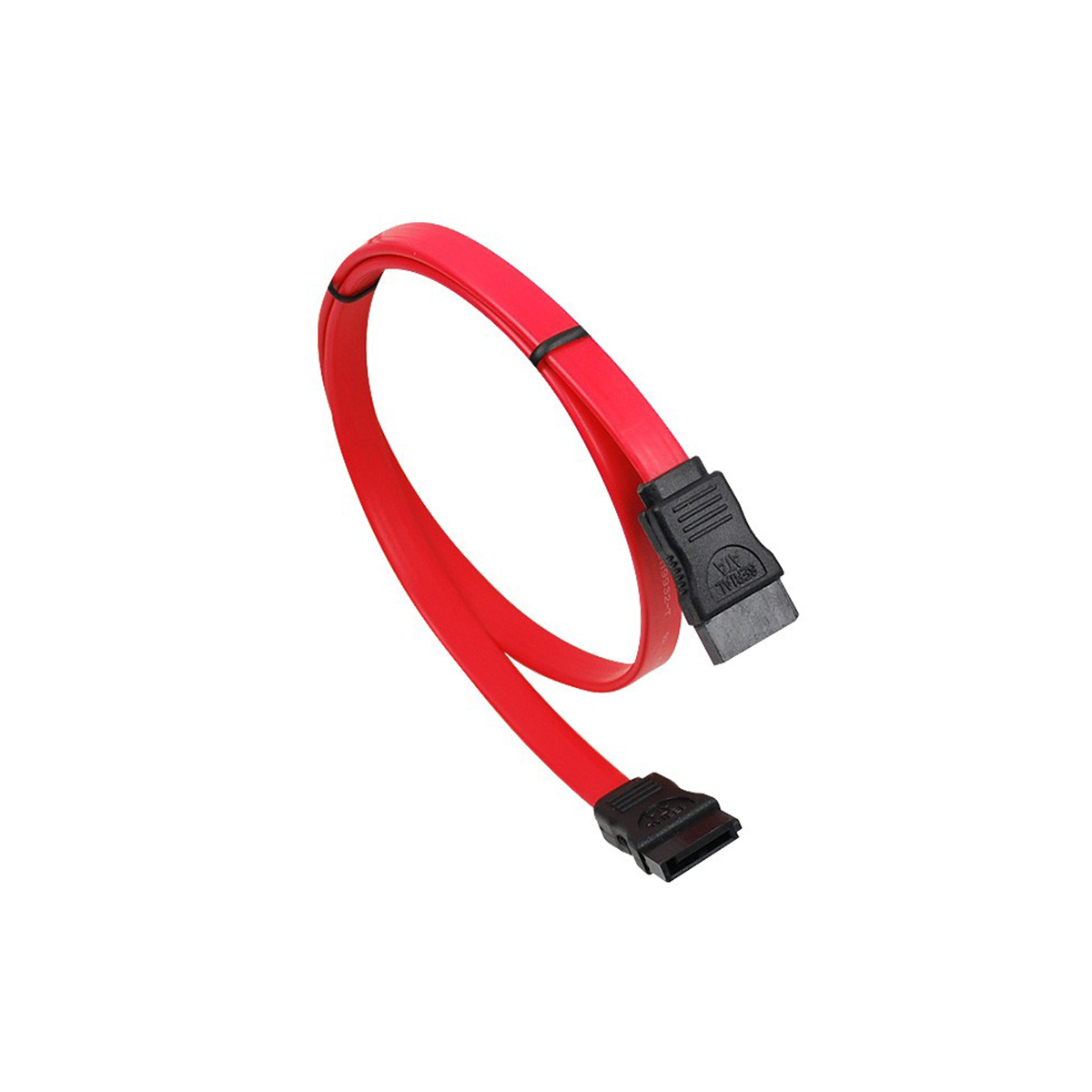- AVLAB-SC07-1
- AVLAB 3-Port SATA + SSD Hybrid PCIe, 6Gbps, Internal Serial ATA, RAID, Hybrid PCIe
■ Built-in socket for a 2.5” SATA SSD for space saving and superior drive performance ■ Hybrid (HyperDuo) enables 80% of SSD performance at one-third the cost Note: HyperDuo automatic storage tiering is only compatible with Windows XP, Vista, 7 and 8. This feature is not fully supported in the Server OSes ■ Hardware RAID (RAID 0, 1 & 10) to offload the host CPU for max performance Supports Port Multiplier FIS-based and Native Command Queuing (NCQ) Note: Only one Port Multiplier is supported at any one time. Supports up to 4 drives connected via Port Multiplier plus 3 single drives for 7 drives total ■ Supports TRIM to extend the life of SSDs for maximum durability ■ HyperDuo mode supports Safe mode and Capacity mode ■ 48-bit LBA mode with support up to 4TB hard disk capacity ■ Works with the latest 6Gb/s SATA HDDs and backwards compatible with 3Gb/s and 1.5Gb/s HDDs
Highlights
EXPANSION
Built-in socket for a 2.5” SATA SSD for space saving and superior drive performance
HYBRID HYPERDUO TECHNOLOGY
Hybrid (HyperDuo) enables 80% of SSD performance at one-third the cost
Note: HyperDuo automatic storage tiering is only compatible with Windows XP, Vista, 7 and 8. This feature is not fully supported in the Server OSes
RAID SUPPORT
Hardware RAID (RAID 0, 1 & 10) to offload the host CPU for max performance
SUPPORTS PORT MULTIPLIER AND NCQ
Supports Port Multiplier FIS-based and Native Command Queuing (NCQ)
Note: Only one Port Multiplier is supported at any one time. Supports up to 4 drives connected via Port Multiplier plus 3 single drives for 7 drives total
TRIM SUPPORT
Inbox drivers enable users to take advantage of OS commands like TRIM to extend the life of SSDs for maximum durability
HYPERDUO SAFE MODE AND CAPACITY MODE
HyperDuo mode supports Safe mode and Capacity mode
LARGE CAPACITY SUPPORT
48-bit LBA mode with support up to 4TB hard disk capacity
BACKWARDS COMPATIBLE
Works with the latest 6Gb/s SATA HDDs and backwards compatible with 3Gb/s and 1.5Gb/s HDDs
Specification
Chipset: Marvell 88SE9230
Compliant with Serial ATA specification, Revision 3.0
Compliant with PCI Express Base specification, Revision 2.0
Supports 6Gb/s data transfer rate
Supports hardware RAID (RAID 0, 1, 10)
Input Interface: x2 PCI Express Generation 2
Output interface: SATA
Connector
■ 3x 7-pin, SATA, Output
■ 1x SSD Socket, 15+7-pin, SATA, Output
Product
■ Dimensions: 5.83" (W) x 0.79" (H) x 4.72" (D)
■ Weight: 0.17lbs
Environmental conditions
■ Operating temperature: 32 to 131 degrees F (0 to 55 degrees C)
■ Operating humidity: 20% to 80% RH (non-condensing)
■ Storage temperature: 14 to 158 degrees F (-10 to 70 degrees C)
SATA data cable length: 19.5" (0.5 m)
Certifications/Standards: FCC, CE, RoHS
Warranty: 1 years limited
Country of origin: China
FAQ
- Q: How do I confirm that Windows detects my expansion card?
- A: To confirm that Windows detects your expansion card, complete the following: Press the Windows key+R, type devmgmt.msc, and press Enter. In Device Manager, under the appropriate heading, confirm that your expansion card is listed and that there isn't an exclamation mark next to it. For example, a RS-422/485 controller card would be under Ports (COM & LPT)
- Q: How do I confirm that Windows detects my USB device?
- To confirm that Windows detects your USB device, complete the following: Press the Windows key+R, type devmgmt.msc, and press Enter. In Device Manager, under the appropriate heading, confirm that your expansion card is listed and that there isn't an exclamation mark next to it. For example, a USB device would be under Universal Serial Bus controllers.
- Q: How can I make sure my serial port is working in Windows?
- To check whether or not an RS-232 serial port is working, perform an RS-232 loopback test by doing the following: If your serial port is not female, convert it by taking a female/female cable or gender changer and plugging it into the serial port. Take a metal paperclip or wire and cross pins 2 and 3. If you look closely at the female end, the pins should be numbered. Open a telnet session on the COM port number of the device that you are testing. Note: To open a telnet session on the COM port, you need a telnet client like PuTTY or Hyper Terminal. Windows XP comes with Hyper Terminal. When the session is open, anything you type into it you should see. The loopback test fails when you cannot see what you are typing. If the loopback test fails, make sure that the serial cable or gender changer that you are using works and that the adapter is in the correct port.








